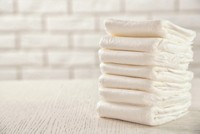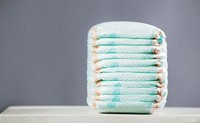Advertisement
Grab your lab coat. Let's get started
Welcome!
Welcome!
Create an account below to get 6 C&EN articles per month, receive newsletters and more - all free.
It seems this is your first time logging in online. Please enter the following information to continue.
As an ACS member you automatically get access to this site. All we need is few more details to create your reading experience.
Not you? Sign in with a different account.
Not you? Sign in with a different account.
ERROR 1
ERROR 1
ERROR 2
ERROR 2
ERROR 2
ERROR 2
ERROR 2
Password and Confirm password must match.
If you have an ACS member number, please enter it here so we can link this account to your membership. (optional)
ERROR 2
ACS values your privacy. By submitting your information, you are gaining access to C&EN and subscribing to our weekly newsletter. We use the information you provide to make your reading experience better, and we will never sell your data to third party members.
Biobased Chemicals
Companies tiptoe back to biobased acrylic acid
New technology and concerns about sustainability drive renewed interest
by Matt Blois
November 10, 2021

Companies large and small are showing renewed interest in biobased acrylic acid as technological advances and growing consumer concern about sustainability make the product more economically viable.
Låkril Technologies, a startup that emerged from Paul Dauenhauer’s chemical engineering lab at the University of Minnesota in November, is a new company stepping into the biobased acrylic acid game. It uses catalytic dehydration to convert corn-derived lactic acid into a biobased acrylic acid. Co-founder Chris Nicholas says Låkril’s innovation is using an amine to suppress a decarbonylation side reaction that produces unwanted side products.
Acrylic acid, which is used to make acrylic paints and superabsorbent polymers for diapers, is usually produced through a petrochemical process that starts with propylene. Over the past decade, several companies have tried to make a less carbon-intensive, biobased alternative, but most of those projects have fizzled out.
Arkema started a pilot project in 2010 to convert biobased glycerin into acrylic acid but couldn’t make it cheaply enough. Cargill, Novozymes, and BASF teamed up to produce biobased acrylic acid in 2012, but BASF dropped out a few years later. Dow, partnering with OPX Biotechnologies, also gave it a shot.
However, Kristin Marshall, an analyst covering biobased materials and chemicals at Lux Research, says consumers now care more about the sustainability of products like diapers, which means they might be willing to pay a premium. “Moms are more aware of all the different things that go in their diapers,” she says. “There’s more transparency.”
As a result, some companies are tiptoeing back toward biobased acrylic acid with updated technologies. In 2019, ADM and LG Chem announced plans to make acrylic acid from corn and said they might construct a plant in North America
Last year, Procter & Gamble, owner of the diaper brand Pampers, licensed technology to Cargill for converting lactic acid into acrylic acid. Cargill already produces lactic acid from corn in large quantities to produce the biobased polymer polylactic acid.
Nicholas says he believes Låkril’s technology produces a higher yield than P&G’s approach. But Låkril is still only working at the bench level, measuring output in grams. The company hopes to scale up production over the next three years, and Nicholas acknowledges there will likely be bumps along the way.
“While we have some technical hurdles to get through over the next couple of years . . . I think we’ve got a good chance of actually finally bringing to market a biobased acrylic solution,” he says.
The US National Science Foundation’s Center for Sustainable Polymers funded the research at Dauenhauer’s lab that led to Låkril. So far, the company has raised $200,000 from Midwest corn marketing organizations. Nicholas says that money will help Låkril build a lab and scale up its processes.
Steve Slome, a biobased materials analyst at the consulting firm Nexant, is skeptical that Låkril’s technology will prove to be better at commercial scale than the biobased processes other firms are proposing. “This route was tried by companies with the ability to do something and access to the feedstocks, and they were unable to do it,” he says.
Even with better technologies, Lux’s Marshall says, biobased acrylics will remain a small market because they will be more expensive. She can imagine a niche diaper brand using more expensive biobased chemicals, but many parents will want the cheapest option. For now, that still involves petrochemicals.




Join the conversation
Contact the reporter
Submit a Letter to the Editor for publication
Engage with us on Twitter